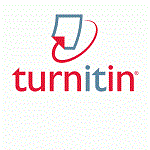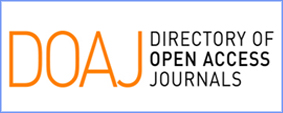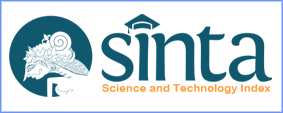Trend Publication of Computational Thinking in Mathematics Education: Bibliometric Review
Abstract
Keywords
Full Text:
PDFReferences
Apriani, A., Ismarmiaty, I., Susilowati, D., Kartarina, K., & Suktiningsih, W. (2021). Penerapan Computational Thinking pada Pelajaran Matematika di Madratsah Ibtidaiyah Nurul Islam Sekarbela Mataram. ADMA : Jurnal Pengabdian Dan Pemberdayaan Masyarakat, 1(2), 47–56. https://doi.org/10.30812/adma.v1i2.1017
Basson, I. (2021). Twenty years into the new millennium: How integrated is Mathematics, Physics and Computer Science at secondary school level? Perspectives in Education, 39(4), 3–26. https://doi.org/10.18820/2519593x/pie.v39.i4.2
Evendi, E. (2022). Mathematical Thinking Styles and Its Implications in Science Learning: A Bibliometric Analysis. Jurnal Penelitian Pendidikan IPA, 8(3), 1503–1511. https://doi.org/10.29303/jppipa.v8i3.1720
Huda, N., Misbah, M., Miriam, S., Harto, M., Rusmansyah, R., Hamid, A., & Muhammad, N. (2023). ANALISIS BIBLIOMETRIK: TREN PENELITIAN BERPIKIR KREATIF. Quantum: Jurnal Inovasi Pendidikan Sains, 14(1), 16–28. https://doi.org/10.20527/quantum.v14i1.14387
Lee, I. (2020). Computational Thinking Integration Patterns Along the Framework Defining Computational Thinking from a Disciplinary Perspective. Journal of Science Education and Technology, 29(1), 9–18. https://doi.org/10.1007/s10956-019-09802-x
Lee, J., Joswick, C., & Pole, K. (2022). Classroom Play and Activities to Support Computational Thinking Development in Early Childhood. Early Childhood Education Journal, 51(3), 457–468. https://doi.org/10.1007/s10643-022-01319-0
Maharani, S., Nusantara, T., As’ ari, A. R., & Qohar, A. (2020a). Computational thinking pemecahan masalah di abad ke-21. Madiun: Perpustakan Nasional: Katalog Dalam Terbitan (KDT).
Maharani, S., Nusantara, T., As’ ari, A. R., & Qohar, A. (2020b). Computational thinking pemecahan masalah di abad ke-21. Madiun: Perpustakan Nasional: Katalog Dalam Terbitan (KDT).
Maharani, S., Nusantara, T., As’ari, A. R., & Qohar, A. (2020). Computational thinking: Media pembelajaran CSK (CT-Sheet for Kids) dalam matematika PAUD. Jurnal Obsesi: Jurnal Pendidikan Anak Usia Dini, 5(1), 975–984.
Papadakis, S., Kalogiannakis, M., & Zaranis, N. (2017). Improving Mathematics Teaching in Kindergarten with Realistic Mathematical Education. Early Childhood Education Journal, 45(3), 369–378. https://doi.org/10.1007/s10643-015-0768-4
Pardo, A. S. (2018). Computational Thinking between Philosophy and STEM - Programming Decision Making Applied to the Behavior of “Moral Machines” in Ethical Values Classroom. Revista Iberoamericana de Tecnologias Del Aprendizaje, 13(1), 20–29. https://doi.org/10.1109/RITA.2018.2809940
Reichert, J. T. (2020). Computational thinking in K-12: An analysis with mathematics teachers. Eurasia Journal of Mathematics, Science and Technology Education, 16(6). https://doi.org/10.29333/EJMSTE/7832
Rich, K. M. (2022). A Learning Trajectory for Variables Based in Computational Thinking Literature: Using Levels of Thinking to Develop Instruction. Computer Science Education, 32(2), 213–234. https://doi.org/10.1080/08993408.2020.1866938
Rodríguez-Martínez, J. A. (2020). Computational thinking and mathematics using Scratch: An experiment with sixth-grade students. Interactive Learning Environments, 28(3), 316–327. https://doi.org/10.1080/10494820.2019.1612448
Sung, W., Ahn, J., & Black, J. B. (2017). Introducing Computational Thinking to Young Learners: Practicing Computational Perspectives Through Embodiment in Mathematics Education. Technology, Knowledge and Learning, 22(3), 443–463. https://doi.org/10.1007/s10758-017-9328-x
Tang, K. (2020). A Content Analysis of Computational Thinking Research: An International Publication Trends and Research Typology. Asia-Pacific Education Researcher, 29(1), 9–19. https://doi.org/10.1007/s40299-019-00442-8
Wu, W.-R., & Yang, K.-L. (2022). The relationships between computational and mathematical thinking: A review study on tasks. Cogent Education, 9(1), 2098929. https://doi.org/10.1080/2331186x.2022.2098929
Ye, H., Liang, B., Ng, O.-L., & Chai, C. S. (2023). Integration of computational thinking in K-12 mathematics education: A systematic review on CT-based mathematics instruction and student learning. International Journal of STEM Education, 10(1), 3. https://doi.org/10.1186/s40594-023-00396-w
Yuntawati, Y., Sanapiah, S., & Aziz, L. A. (2021). Analisis Kemampuan Computational Thinking Mahasiswa Dalam Menyelesaikan Masalah Matematika. Media Pendidikan Matematika, 9(1), 34. https://doi.org/10.33394/mpm.v9i1.3898
Zhang, Y., & Savard, A. (2023). Defining Computational Thinking as an Evident Tool in Problem-Solving: Comparative Research on Chinese and Canadian Mathematics Textbooks. ECNU Review of Education, 209653112311583. https://doi.org/10.1177/20965311231158393
Article Metrics
Abstract has been read : 361 timesPDF file viewed/downloaded: 0 times
DOI: http://doi.org/10.25273/jipm.v12i1.17654
Refbacks
- There are currently no refbacks.
Copyright (c) 2023 JIPM (Jurnal Ilmiah Pendidikan Matematika)

This work is licensed under a Creative Commons Attribution-ShareAlike 4.0 International License.
View JIPM Stats
JIPM indexed by:
Copyright of JIPM (Jurnal Ilmiah Pendidikan Matematika) ISSN 2502-1745 (Online) and ISSN 2301-7929 (Print)













